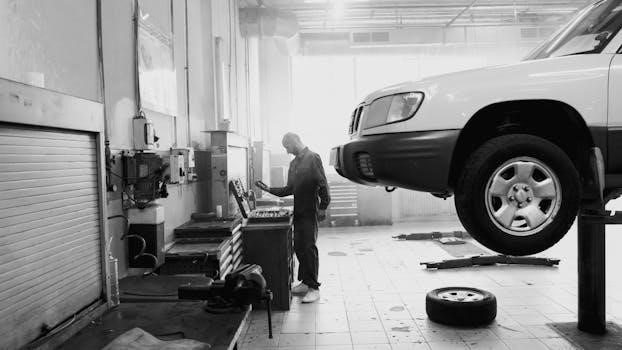What is a Manual Grease Gun?
A manual grease gun is a handheld tool used for lubrication. It applies grease through an aperture to a specific point, usually from a cartridge to a fitting. These come in lever or pistol-grip types, operated by hand for controlled grease dispensing.

Types of Manual Grease Guns
Manual grease guns come in lever and pistol-grip models. Lever guns need two hands, one to hold and the other on the lever pump. Pistol-grip guns use a trigger mechanism that offers a different style of operation.
Lever Grease Guns
Lever grease guns are a manual type that is hand-operated. Compared to other manual guns, they have the most volume or stroke. These guns need to be held using both hands, one hand to hold the gun and the other on the pump of the lever. They generally generate more pressure and dispense more lubricant with each stroke.
The ability to control force and flow makes them suitable for heavy-duty uses. If you are looking for a handheld lever action grease gun suitable for heavy-duty use, the Alemite 500-E grease gun is recommended. However, they require more room for proper use due to the lever action.
Pistol Grip Grease Guns
Pistol grip grease guns are a type of manual grease gun featuring a grip handle with a trigger mechanism. You pull the trigger to release lubricant. The grip handle allows you to hold the gun and operate the trigger with one hand, which makes it convenient for repetitive maintenance tasks.
These types of grease guns offer a different style of manual operation. Often, these are a great choice for use in maintenance tasks where you will need to continually be applying grease. Pistol grip grease guns are generally easier to use in tighter spaces compared to lever-action models.

Applications of Manual Grease Guns
Manual grease guns are commonly used in automotive maintenance and heavy equipment lubrication. They apply grease to reduce friction and prevent wear, ensuring smooth operation and extending the lifespan of mechanical components in various applications.
Automotive Maintenance
In automotive maintenance, manual grease guns are crucial for lubricating various components. They ensure smooth operation and longevity. Mechanics commonly use them on wheel hub bearings, suspension parts, and chassis components to reduce friction and prevent wear. Regular lubrication with a grease gun helps maintain optimal vehicle performance.
The use of manual grease guns in automotive maintenance is paramount. It helps prevent premature failures, and extends the lifespan of critical parts. Technicians must follow manufacturer recommendations for greasing intervals and use appropriate types of grease to achieve optimal results. This ensures vehicles remain reliable and safe on the road.
Heavy Equipment Lubrication
Heavy equipment lubrication relies heavily on manual grease guns to maintain smooth operation. These tools deliver lubricant to critical points, reducing friction and wear. This is particularly important for machinery operating under heavy loads and in harsh conditions. Proper lubrication prevents premature failure and extends the lifespan of expensive equipment.
Selecting the best grease gun for heavy equipment involves considering factors like pressure capacity and ease of use. Regular lubrication, as specified by the manufacturer, is essential. This ensures all moving parts receive adequate grease. Consistent maintenance with a reliable manual grease gun optimizes performance and minimizes downtime.
How a Manual Grease Gun Works
A manual grease gun functions by using hand-operated mechanisms. These mechanisms pressurize grease within the barrel. Then, the grease is forced through a nozzle, delivering lubrication to specific points on machinery, reducing friction and wear on mechanical components.
Loading Grease
Loading grease into a manual grease gun is a fundamental step in ensuring its proper operation. The process begins with selecting the appropriate grease cartridge or bulk grease, based on the machinery’s requirements. If using a cartridge, the end cap of the grease gun’s barrel must be unscrewed, and the old cartridge (if present) removed.
Next, the new cartridge is inserted, and the end cap is securely tightened. For bulk grease, the follower rod must be retracted fully, and the grease is carefully scooped into the barrel, ensuring minimal air pockets. Once filled, the follower rod is advanced to create pressure on the grease. It is also important to bleed any air trapped inside before use. Following these steps ensures the grease gun is ready for effective lubrication.
Pumping Mechanism
The pumping mechanism of a manual grease gun is essential for delivering lubricant effectively. These mechanisms vary depending on the type of grease gun, such as lever or pistol-grip models. In lever-action guns, a hand-operated lever drives a piston, which pressurizes the grease within the barrel.
Each pump of the lever forces a specific volume of grease through the nozzle or hose. Pistol-grip grease guns employ a trigger mechanism; pulling the trigger advances the piston, similarly pressurizing and dispensing the grease. The design allows for controlled lubricant application, ensuring precise amounts are delivered to the machinery. Regular maintenance of this mechanism is crucial for consistent and reliable performance. Understanding the intricacies of the pumping mechanism aids in efficient lubrication and extends the lifespan of mechanical components. Whether lever or pistol grip, the core function remains the same⁚ converting manual force into controlled grease flow.
Grease Delivery
Grease delivery in a manual grease gun is the final step in the lubrication process. After the pumping mechanism pressurizes the grease, it’s forced through a nozzle or flexible hose. This hose is connected to the grease fitting on the machinery, allowing the lubricant to reach the precise lubrication point.
The nozzle type can vary, with options for tight spaces or angled fittings. Proper connection between the grease gun and fitting is vital for effective delivery. Leaks can occur if the connection isn’t secure. A controlled and steady application of grease ensures that mechanical components receive adequate lubrication, reducing friction and wear. The effectiveness of grease delivery depends on the integrity of the hose, nozzle, and secure connection, all contributing to the efficient functioning and longevity of machinery. Regular inspection and maintenance of the delivery components are crucial for optimal performance.

Choosing the Right Grease
Selecting the correct grease is vital for effective machinery lubrication. Different applications require specific grease types, so consult the manufacturer’s manual for recommendations on the appropriate grease specifications. The right grease must be compatible with the equipment and its operating conditions. Using a general-purpose grease may not suffice, especially for heavy-duty applications.
High-pressure grease formulated for heavy loads and high-stress environments is necessary for some machinery. Consider factors like workload, climate, and operating temperatures when choosing grease. Over-lubrication or under-lubrication can both lead to equipment problems, so adherence to recommended greasing intervals is essential; Proper grease selection ensures optimal lubrication, reduces wear and tear, and extends the lifespan of mechanical components, ultimately contributing to efficient machinery operation.
Maintenance of Manual Grease Guns
Regular maintenance is essential for grease gun longevity. After each use, clean the gun with a rag or brush. Inspect seals and fittings, replacing worn parts. Proper maintenance prevents clogging and ensures consistent performance for all your lubrication needs.
Cleaning
Cleaning your manual grease gun is a vital step in its maintenance. Begin by disassembling the gun as much as possible, referring to the user manual for guidance; Remove the grease tube and wipe away any excess grease from the inside of the barrel. A clean rag or paper towel works well for this task.
Next, clean the grease fitting and coupler. These parts can accumulate hardened grease, which can impede proper sealing and lubrication. Use a small brush or pick to remove any stubborn deposits. For more thorough cleaning, consider using a solvent specifically designed for removing grease and oil.
Pay attention to the check valve and other internal components. These parts are crucial for proper gun operation, and any debris or buildup can cause malfunctions. Clean these components carefully, ensuring they are free from any obstructions. Reassemble the grease gun, applying a small amount of fresh grease to the threads and moving parts to ensure smooth operation.
Inspecting and Replacing Parts
Regularly inspecting and replacing worn parts is crucial for maintaining a manual grease gun. Start by checking the coupler for wear or damage. If it’s worn, it won’t seal properly on the grease fitting, leading to leaks and inefficient lubrication. Replace the coupler if necessary, ensuring the new one is compatible with your grease gun model.
Examine the hose for cracks, kinks, or other signs of damage. A damaged hose can restrict grease flow or even burst under pressure. Replace the hose promptly if you notice any issues. Next, inspect the piston and seals for wear. If the piston is scored or the seals are cracked or hardened, they may not provide a proper seal, resulting in grease leakage. Replace these parts as needed.
Finally, check the spring for proper tension. A weak spring can reduce the gun’s pumping efficiency. Replace the spring if it feels weak or compressed. By regularly inspecting and replacing worn parts, you can keep your manual grease gun in optimal working condition and prolong its lifespan.

Safety Precautions
When operating a manual grease gun, adherence to safety precautions is paramount. Always wear appropriate personal protective equipment (PPE), including gloves and safety glasses, to shield against potential grease splatter, ensuring eye and skin safety. Exercise caution in confined workspaces or near moving machinery, being mindful of surroundings to prevent accidents.
Before use, verify the grease gun’s proper assembly and functionality, ensuring all connections are secure. Avoid over-pressurizing the gun, as it can lead to component failure or grease ejection. Direct the grease flow away from yourself and others.
When lubricating equipment, be aware of potential pinch points and entanglement hazards. Never place hands or fingers near moving parts. After use, relieve pressure in the grease gun before disconnecting, and clean any excess grease from the tool and surrounding surfaces. Dispose of used grease cartridges and waste responsibly, following environmental regulations.
Proper training on grease gun operation is essential for preventing accidents. By following these safety precautions, users can minimize risks and ensure a safe working environment.
